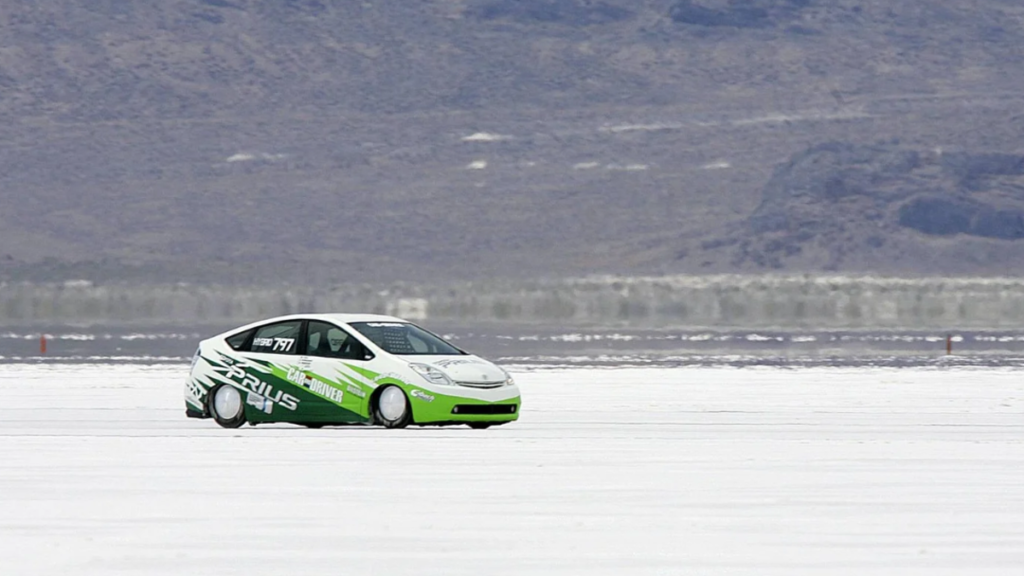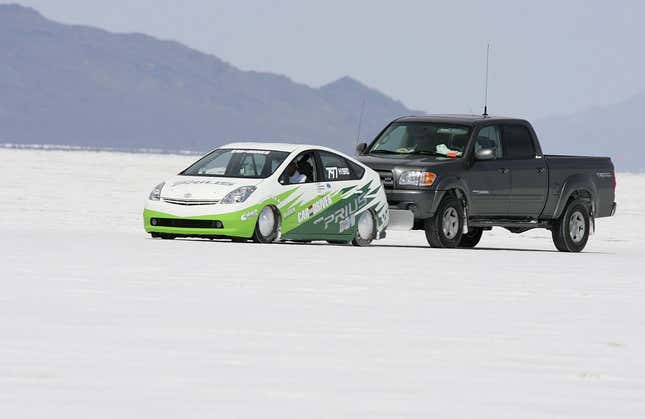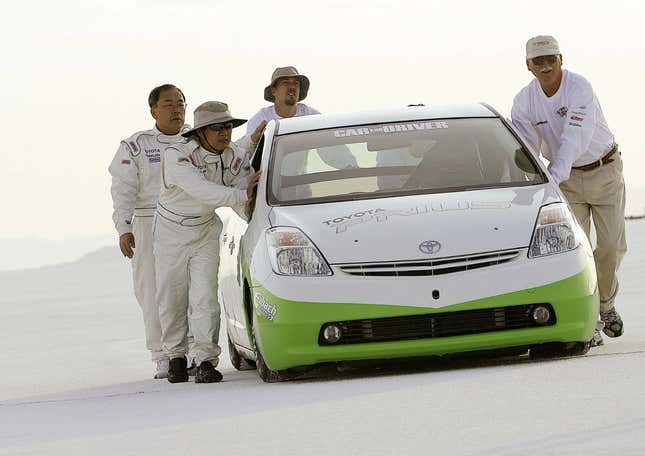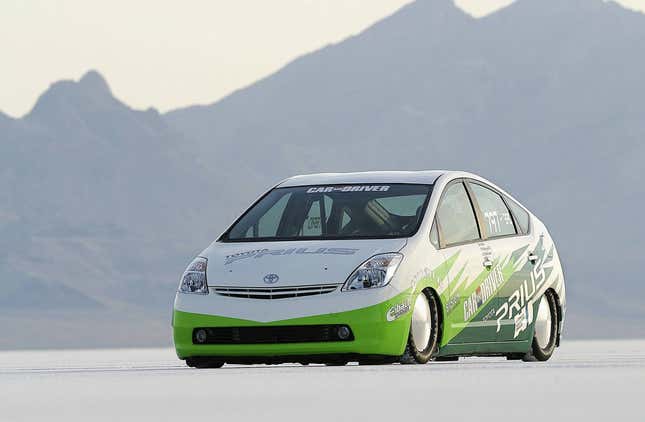Toyota Is Crushing Its Fastest Prius: Report

Image: Toyota
Prior to this car arriving at the Bonneville Salt Flats in 2004, no hybrid had ever run at America’s natural race track. This is it, this was the first one. This is a piece of racing history that deserves to be kept for future generations to admire. Toyota arrived to the salt with a mostly-stock Prius knowing that it would walk away with a record for the history books, because the hybrid class was invented just for this car.
The New Prius Looks Way Better Than it Needed To
Twenty years ago this Prius arrived and set a new record of 130.794 miles per hour. It may not be in the record books anymore, but it’ll always be in the history books. According to Japanese Nostalgic Car, this Prius was spotted in the lot of a recycling yard in Dallas, Texas alongside a 1978 Cressida, both former residents of the Toyota USA Museum when the company was headquartered in Torrance, California prior to it moving to Texas.
Landspeed Prius Race
A stock second-generation Toyota Prius was capable of a top speed of 106 mph. Vehicle engineer Dr. Shigeyuki Hori and his skunkworks team got working on an effort to prove the car’s speed capabilities and dialed in a bit more, uh, speed. The standard gasoline engine wasn’t touched, but the hybrid synergy drive unit was overclocked slightly to spin at higher RPMs with the inverter voltage upped from 500 to 550.
The car’s transmission was fitted with a 3.2-to-1 final drive gear versus the 4.32:1 in the car as standard. An ice box was put in place of the passenger seat to help cool the electric motor at high output, and you can see that the car was lowered significantly and fitted with so-called moon discs on each wheel for aerodynamic efficiency. Aside from safety gear, this was a mostly stock Prius, which already had a pretty low drag coefficient of 0.26.

Image: Toyota
Hybrid technology has come a long way since 2004, and 130 mph wouldn’t have been impressive even just a few years later. The Prius, even by current Prius standards, was pretty damn slow. But it was in part due to programs like this that Toyota and its engineers learned how to make the Prius better. The current Prius owes a lot to this weird race car. It had to be a kind of bad car in order to learn to be a pretty darn good one.
I have reached out to Toyota for comment regarding the destiny of these interesting automobiles. As soon as I hear back from Toyota, I will update this post to include the company’s statement.

Image: Toyota

Image: Toyota







